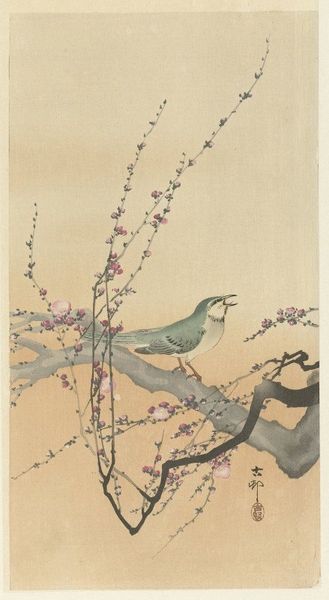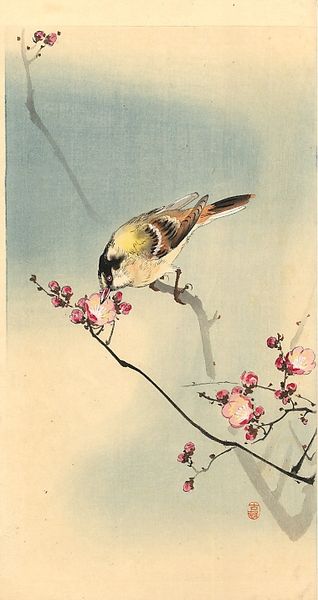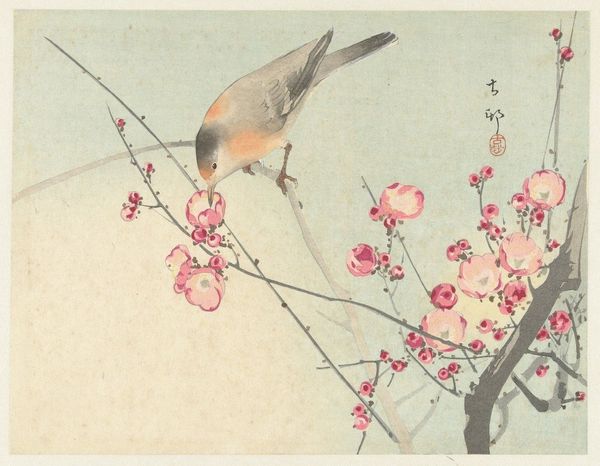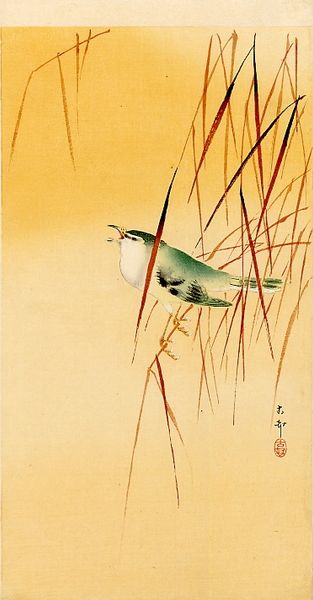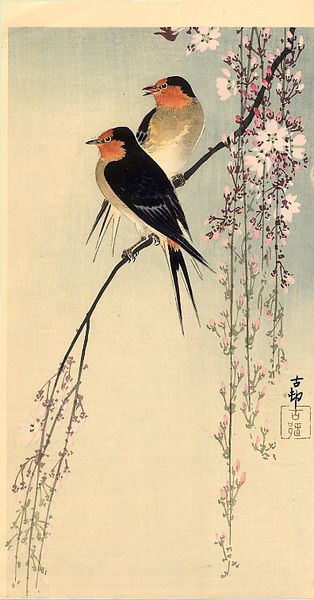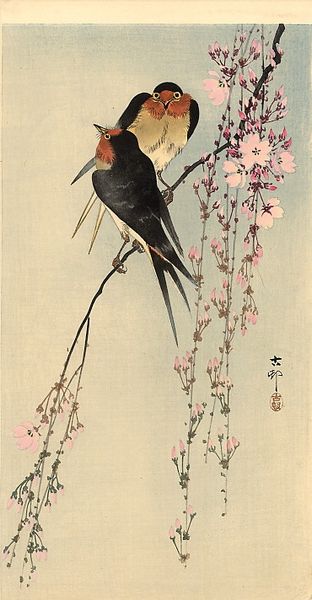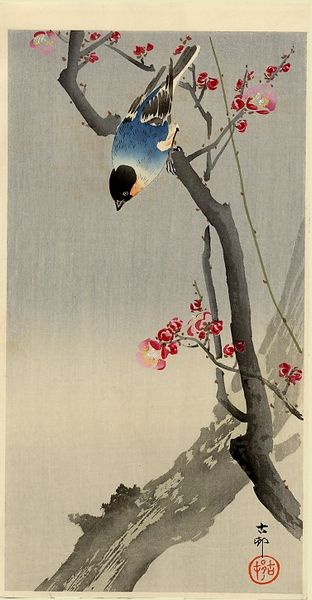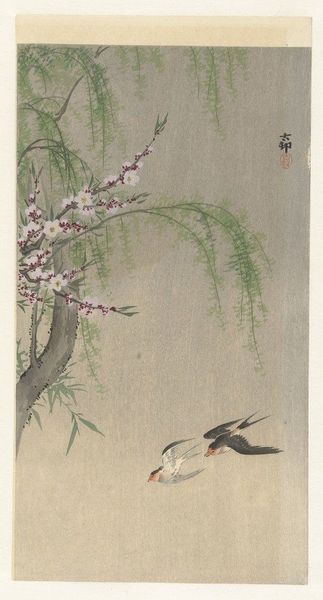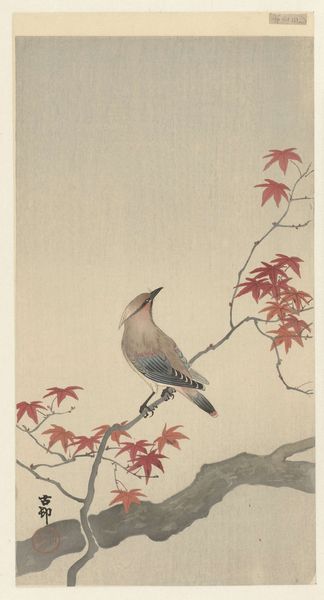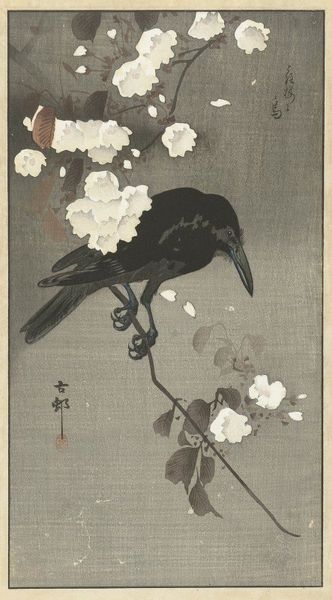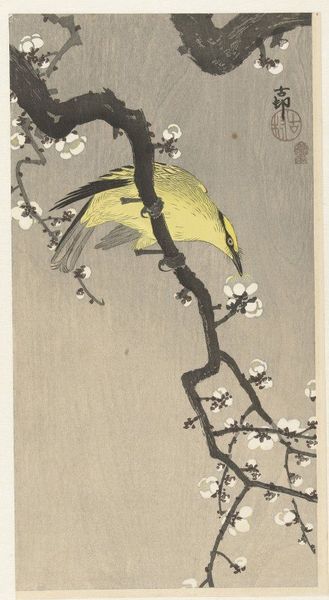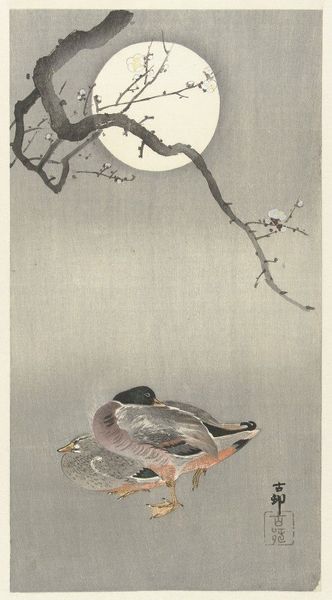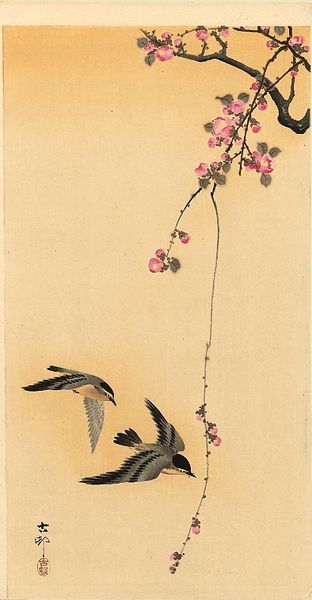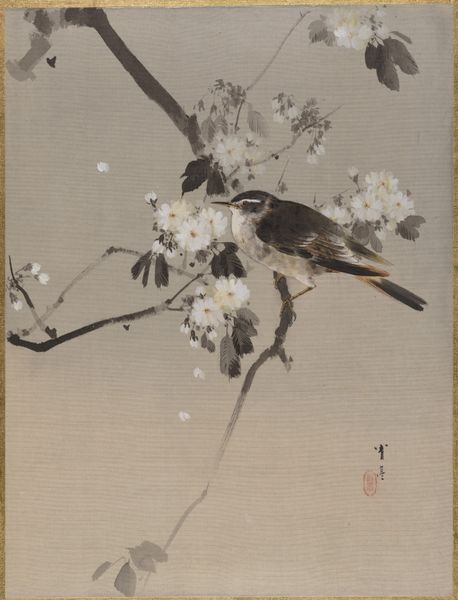
watercolor, woodblock-print
#
impressionism
#
asian-art
#
bird
#
flower
#
ukiyo-e
#
watercolor
#
woodblock-print
#
plant
#
naive art
#
japanese
#
watercolour illustration
#
watercolor
Copyright: Public domain
Curator: This is Ohara Koson's woodblock print, "Orange-Breasted Bird," depicting just that. It’s a vibrant example of Shin-hanga, a 20th-century art movement revitalizing traditional ukiyo-e prints. Editor: My immediate reaction is the gentle serenity. The soft watercolor palette, combined with the delicate lines, evokes a feeling of quiet contemplation. Curator: Koson was a key figure in Shin-hanga, adapting traditional techniques to suit Western tastes, which were essential for the success of this movement in global markets. It helped promote the popularity of Japanese aesthetics internationally. Editor: I'm drawn to how the bird and the flowers are portrayed. The bird seems a symbol of vitality, a flash of warm color against the muted background. Yellow blooms are universally read as signaling growth, energy and optimism. What do you read in the positioning of the subject on the bare limb? Curator: Well, during this period in Japan, we observe significant tensions around the commodification of culture and these woodblock prints. Many artists like Koson needed to consider how their art could cater to both Japanese and foreign markets, walking this line between cultural authenticity and Western commercial expectations. Birds and floral studies were easy sells in both cultures. Editor: Yes, and beyond markets, the image makes a delicate statement. It has this poignant combination of fragility and resilience. The bird seems quite secure despite the apparent frailty of its perch and reminds me of enduring hope within delicate beauty. Curator: Considering its success on the international art scene and commercial market, Koson's "Orange-Breasted Bird" illustrates how early 20th-century artists negotiated cross-cultural expectations and demands, helping disseminate ukiyo-e and other Asian arts practices internationally. Editor: Precisely. This artwork echoes a cultural sensibility deeply rooted in viewing natural themes through allegorical understanding and symbolism that endures to the present. Curator: That’s an excellent point. It's clear that in the reception and commodification of Asian art internationally, many subtle messages were often lost in translation, but there still seems to be something that translated to Western collectors through form. Editor: Indeed. This particular bird sings a powerful song of beauty and resilience, wouldn't you say?
Comments
No comments
Be the first to comment and join the conversation on the ultimate creative platform.
